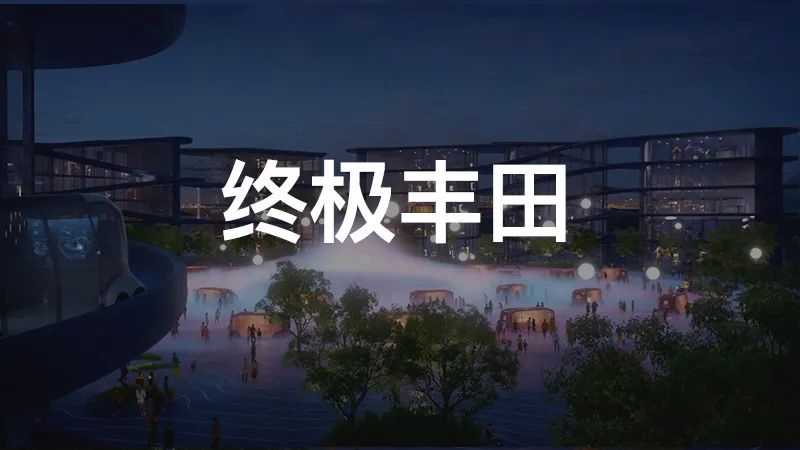Retardation leads to defeat, and Toyota knows it better than anyone else.
Standing at the crossroads of the automotive industry revolution, the two world automotive giants, Volkswagen and General Motors, have both given signals of transformation, moving towards electrification and intelligence.
General Motors has chosen to revisit the “dichotomy” rule, starting to shrink its international market and focusing firepower on the North American and Chinese markets. Volkswagen chose to take a “bold gamble” and announced plans in 2019 to invest 60 billion euros in areas such as electrification and digitalization over the next five years, either succeed or perish.
Toyota has chosen a different path, identifying its own position and decided to transform into a smart mobility service company for taxi service.
At this point, Toyota began to invest heavily in various markets such as China, Japan, and the United States. First, it invested $500 million in Uber in 2018, then $1 billion in Grab, and finally $600 million in Didi. Toyota’s determination is obvious along the way.
But is this Toyota’s ultimate goal? That is the topic we are discussing today.
Automatic Driving Refueling
During the winter of the automobile market, many car companies chose to tighten their “coats” to protect themselves, but Toyota chose to invest against the cycle and continued to refuel in the field of autonomous driving. This cannot help but lead to speculation, what is Toyota up to?
On February 26th, Pony.ai officially announced that it had raised $400 million (about 2.8 billion yuan) from Toyota Motor Corporation to deepen and expand the cooperation between the two companies in the field of mobility.
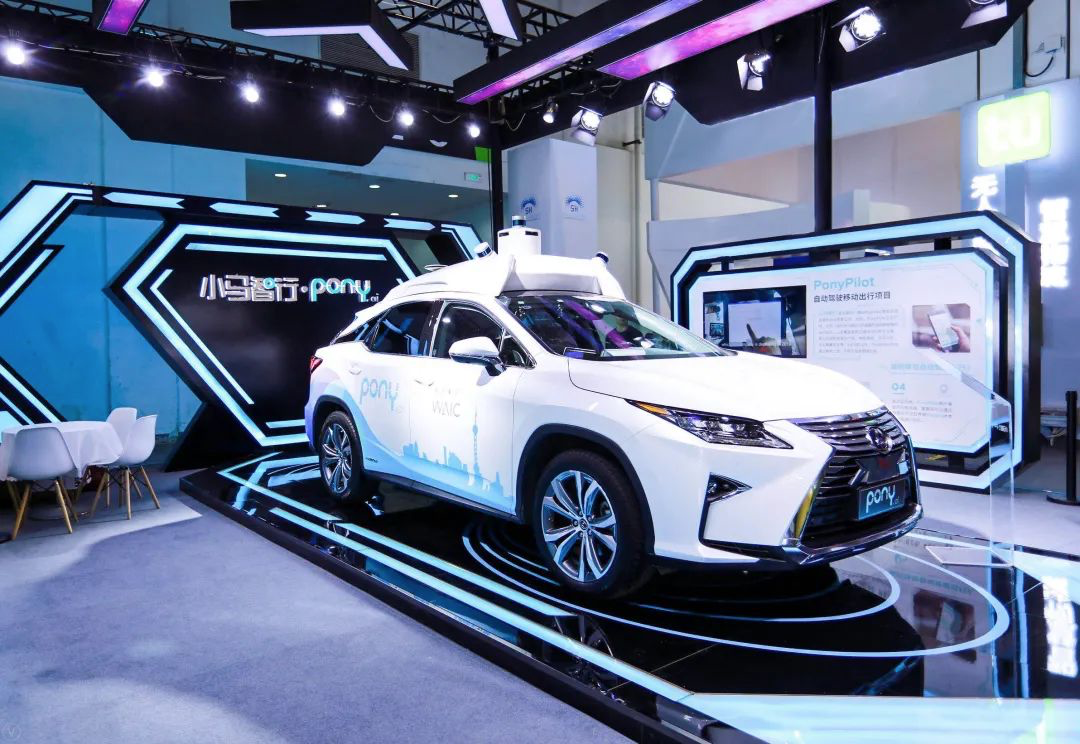
Picture source: Pony.ai website
After seeing the news, my first reaction was that Toyota, who always claims to “squeeze water out of a wet rag,” had invested so much money in a startup company, which must not be simple.
Because looking at Toyota’s historical investment records, Toyota’s “big moves” are mostly spent on the most critical edges. For example, in 1957, Toyota spent 400 million yen to invest in the construction of a motor vehicle driving school. It is worth noting that Toyota had only 1 billion yen in registered capital at that time.
But spending so much money must be for more returns. After building the driving school, Toyota promoted the popularization of drivers. Along with the popularity of cars and drivers, Toyota’s sales also grew rapidly, and Toyota quickly developed and grew.
One of the reasons for Toyota’s success is also because it has a reasonable investment that generates more money and a long-term vision for development. What Toyota is going to do next also proves this point.
With questions in mind, I went to look for the reason for Toyota’s “big moves.”Firstly, we need to understand that Pony.ai is a company that specializes in researching autonomous driving. In the current market environment, autonomous driving technology is an area that various manufacturers are exploring, and everyone is striving to achieve success in this new field. After all, whoever has the leading edge can make a fortune, and Tesla is a vivid example.

Picture of Elon Musk sourced from the internet.
Investing in Pony.ai is not without cause. According to official sources from Pony.ai, in August 2019, they announced a partnership with Toyota. The stated goal is for the two parties to jointly explore further implementation of autonomous driving, and to create products and services that will truly benefit everyone in the fields of autonomous driving technology and future transportation.
It appears that Toyota’s investment in Pony.ai began operation last year. The money invested is an extension of the business cooperation relationship established last year. In Pony.ai’s words, this round of financing is a guarantee to further accelerate the R&D and commercialization of autonomous driving.
However, this raises a question: Why invest in an external expansion rather than investing in their own autonomous driving company? This is Toyota’s strategy: “Home and away.”
How should we understand “Home and away”?
In the words of Akio Toyoda, “home” refers to Toyota’s ability to use genchi genbutsu (a key principle of Toyota’s production method to observe and solve problems on site) to internally self-create value-added businesses and areas. “Away” refers to other companies having more advantages in their own professional areas than Toyota, so combining internal and external strengths is needed to create greater value.
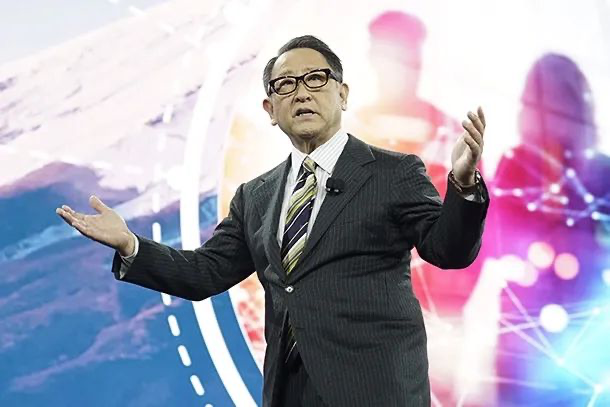
Akio Toyoda sourced from Toyota’s official website.
Therefore, in the early stages of autonomous driving, investing in low-value technical companies like Pony.ai allows Toyota to absorb Pony.ai’s advantages in autonomous driving, and to further accelerate and strengthen the advancement of autonomous driving technology. Only by mastering core technology can a company form its core competitiveness and have long-term development.
But since this investment is to strengthen autonomous driving technology, Pony.ai must have something outstanding to be worth Toyota’s “big investment.” First of all, there are Pony.ai’s core members. Looking at their official introduction, they claim to have had an all-star lineup from the beginning, such as Pony.ai’s lead advisor, Qi Zhou.
Who is Qi Zhou?He has various titles such as the only Chinese winner of the Turing Award, which is considered the “Nobel Prize of Computing”, the creator of “Yaoban” program at Tsinghua University, the founder of Turing AI, and a member of the Chinese Academy of Sciences. In addition, there is also Lou Tiancheng, known as the “Programming Emperor”, among his team members. This team can be said to be very strong.
Moreover, Xiaoma Zhixing is currently the highest-valued autonomous driving startup company in China. In June 2019, it also obtained a license for autonomous driving taxi operations in California, USA. According to Xiaoma Zhixing, this is also the first time that the California government has issued such a license to a company with Chinese background.
There are many more achievements that don’t need to be listed one by one. In short, after seeing the footprint of Xiaoma Zhixing, you will find that this is a very powerful startup company.
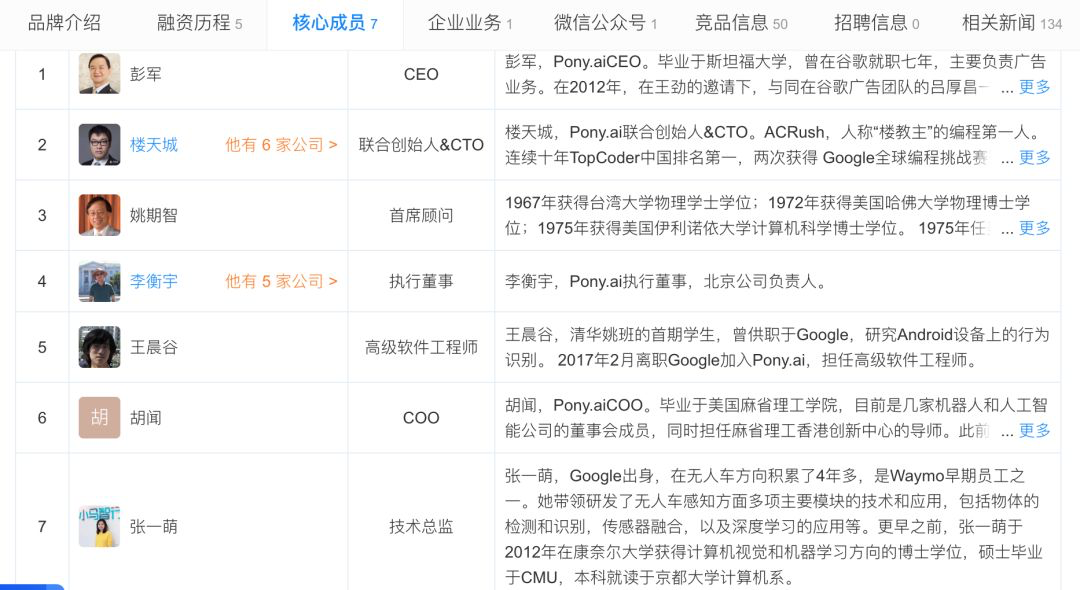
Xiaoma Zhixing’s core members are from Tianyancha
Under these circumstances, Toyota’s investment in Xiaoma Zhixing can not only lay the foundation for China’s future autonomous driving market, but also take advantage of Xiaoma Zhixing’s localization advantage to establish a leading competitive position in the Chinese market in the future.
More importantly, Xiaoma Zhixing can be added to the MaaS (Mobility as a Service) plan to help the e-Palette’s autonomous driving system.
E-Palette is a self-driving concept car previously released by Toyota at CES. According to Toyota’s plan, e-Palette will serve as a transportation for athletes and logistics personnel during the 2020 Tokyo Olympics and Paralympics.
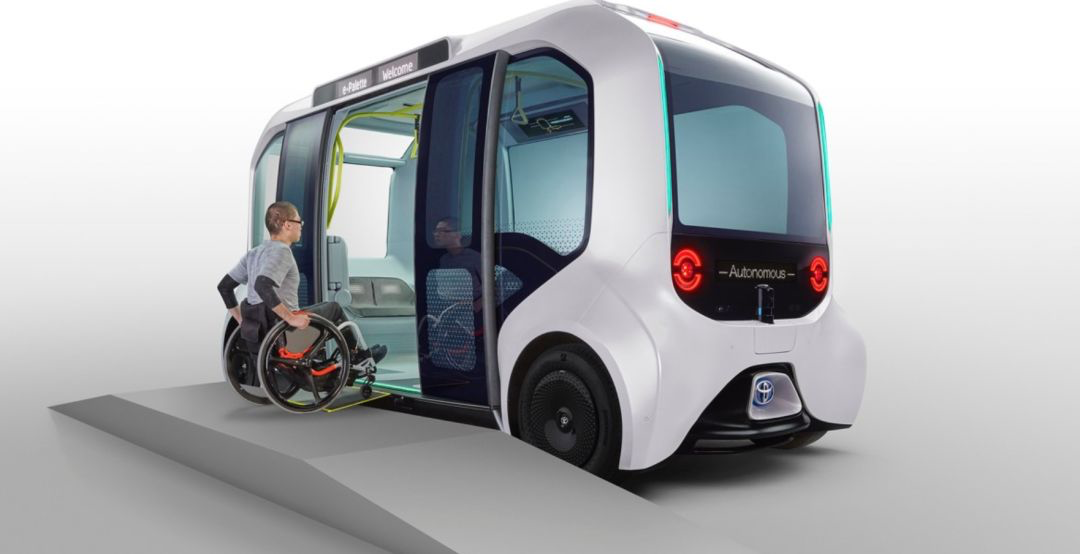
Concept design of e-Palette from Toyota’s official website
However, according to Dick Pound, a member of the International Olympic Committee, whether the Tokyo Olympics can be held as scheduled depends on whether the COVID-19 epidemic can be controlled by the end of May. If the epidemic cannot be controlled, the Tokyo Olympics may be cancelled.
For a moment, the Tokyo Olympics became a mystery. If it cannot be held as scheduled, e-Palette will also lose a good opportunity to showcase itself to the world.
Attacking the Mobile Transportation Market
Some may ask, what is the MaaS plan?
The full name of MaaS is Mobility as a Service, which means mobile transportation services. According to Toyota’s official words, as cars become platforms for providing mobility services to the society, the MaaS business field has become a new breakthrough. Therefore, implementing the MaaS plan is necessary.Toyota announced its connected strategy at the end of 2016 and has been accelerating its MaaS plan ever since. The connected strategy is a prerequisite for mobile travel services. Simply put, it creates new mobile travel services through internet technology.
The connected strategy includes three directions, namely “connecting all vehicles,” “using big data,” and “creating new mobile travel services.” To achieve these three directions, a platform is needed to support them. MSPF, the mobile travel service platform, comes as the critical information infrastructure in this strategy.
Toyota will use MSPF to manage vehicle information. In other words, as a mobile intelligent terminal, the vehicle will provide information to MSPF, including the collection of driving data, recording of vehicle conditions, scheduling of maintenance, and providing driver safety assessment services.
Once the platform is built, Toyota will shift from a traditional car manufacturer to a mobile travel service provider. Through mobile service platform vendors, Toyota will achieve further sales growth.
For ordinary mobile travel services, it is not necessary to exert such great efforts. But for Toyota, what it wants to do is the intelligent mobile travel service of today. Relying solely on Toyota itself to promote it from the ground up is not feasible due to its lack of technical ability and insufficient speed. Because it requires the use of an autonomous driving system, which is not Toyota’s strong suit.
Therefore, Toyota will cooperate with leading mobile travel service companies such as Uber, Grab, and Didi to speed up the landing of MaaS.
According to the MaaS plan, existing vehicles can be used as current mobile travel services. But in the future, Toyota believes that it is necessary to design dedicated vehicles for MaaS, so it has added three car models to its product lineup.
In addition to the e-Palette announced at CES 2018, Toyota is also developing the mid-size car Mass Sienna and the small car MaaS BEV. Except for e-Palette which is closer to reality, the other two models are still in the conceptual stage, and it is uncertain whether they will be unveiled at this year’s Tokyo Olympic Games or not.
Toyota envisions new travel services that use autonomous driving technology designed specifically for MaaS vehicles, which is called Autono-MaaS.Regardless of partnerships with ride-hailing companies or building cars, solving the problem of autonomous driving is fundamental and the root of everything. Without achieving autonomous driving, everything is just empty talk. Therefore, Toyota has two development paths for autonomous driving: Guardian and Chauffeur.
How to understand these two development paths?
Firstly, Guardian is based on advanced driver assistance, which means that there must be a driver to supervise the driving. In emergency situations where the vehicle reaches its limit, the driver should intervene to control the vehicle. In other words, it is L3 (level 3). By iterating from the bottom up, it will eventually be able to be used in conjunction with L4 and L5 autonomous driving systems developed by Toyota or other companies. Under the current technological conditions, this path can allow Toyota to land in a short period of time, but its main goal is to reduce traffic casualties.
However, this path also faces a problem after landing, that is, the price. Currently, Tesla’s L3 is approaching maturity, but the problem is that the price is too high. According to the cost analysis of Model 3 by China International Capital Corporation, its electronic control accounts for 18%, while the electronic control of general electric vehicle models is about half, and the difference is caused by the intelligent driving system.
Therefore, even if Toyota achieves Tesla’s technical level and wants to use it in transportation services, it must reduce costs to make it feasible. Cost control happens to be Toyota’s strength.
Chauffeur is a fully autonomous driving system developed internally by Toyota. Its goal is to allow vehicles to drive without human supervision. This method can provide transportation services for people who are unable to drive due to age, physical condition or other reasons.
Regarding these two plans, Toyota Research Institute released an autonomous driving test car TRI-P4 in January 2019, which was based on the fifth-generation Lexus LS 500h. The test car is currently Toyota’s most advanced autonomous driving research vehicle, which has stronger perception and computing capabilities, and can run a large number of machine learning algorithms in parallel to accelerate learning speed.
Toyota officials said that TRI-P4 will help accelerate the development of autonomous driving technology for Chauffeur and Guardian.
According to the official statement, TRI-P4 will showcase its fully automatic driving research and development achievements in the MaaS driving environment in Tokyo from July to September 2020.
To summarize, Toyota aims to position itself as an intelligent mobile travel service company through self-driving technology.
But is becoming an intelligent mobile travel service company Toyota’s ultimate goal? This is unlikely for a company like Toyota with long-term vision. What is Toyota’s ultimate goal then? Toyota’s official website hints at an answer: “Building a Future Prototype City.”
This seems to better match Toyota’s ambitions. The progression from automatic driving to travel services to future prototype cities can now be explained.
The message of Toyota’s ambition to build a future prototype city was released on January 7. So far, this message still takes up the largest area in the Toyota news column, demonstrating Toyota’s attention to this project.
What kind of city is it? According to Toyota, it is called “Woven City,” a completely connected ecosystem driven by hydrogen fuel cells. It is built at the foot of Mount Fuji in Japan and covers an area of 175 acres (about 708,000 square meters), which is about 99 standard football fields.
According to Toyota’s plan, construction of Woven City will start early in 2021. Woven City is envisioned as a “living laboratory” where Toyota’s full-time and retired employees and their families, visiting scientists, and industrial partners will live. The city will be a test field for intelligent travel, smart homes, and robotics technology. The so-called autonomous driving and travel services are just a part of the city.
Akio Toyoda, the President of Toyota, said: “Building a complete city from scratch, even a small-scale one like this, is a rare opportunity to develop future technologies.”## Toyota to Build “Woven City” With State-of-the-Art Technology
Toyota officials have announced plans to build a futuristic “Woven City,” where infrastructure for cars and buildings will be connected by a digital operating system, allowing for AI technology to be tested in both virtual and real-world environments. This will maximize the potential for creating a better way of life and seamless travel for all.
Toyota will also be introducing e-Palettes, which will be used to transport people and for intelligent mobile retail in the Woven City.
The city will feature three types of streets: high-speed and low-speed lanes, mixed streets for personal mobility and pedestrians, and park-like promenades designed exclusively for pedestrians. Additionally, residences will be equipped with the latest smart technologies, such as indoor robots to assist with daily living tasks. Sensors will also be installed to check residents’ health, meet their basic needs, and improve their daily lives.
In addition to Toyota’s advanced technology, the company’s “Toyota Way” philosophy and “respect for people” will be woven into the fabric of the Woven City. In Toyota’s philosophy, “continuous improvement” and “respect for people” are the two main pillars.
The decision to have Toyota employees be the first to live in the city exemplifies the company’s dedication to its employees and its belief that taking care of people is fundamental to achieving success. This creates a virtuous cycle that benefits not only the company, but also its employees and customers.
Toyota’s Strategy for Winning Hearts
Toyota’s strategy for winning hearts is even more impressive than its plans for the Woven City.
As the ancient Chinese saying goes, “Power comes from the heart, and when the heart is strong, success follows.” In today’s market environment, this translates to “winning the market by winning people’s hearts.”
On Toyota’s official website, there is a section called “Vision and Philosophy,” which states that the Toyota Way has two main pillars: “continuous improvement” and “respect for people.”The “Toyota Way” is built on the foundation of “people first”. As stated in the beginning of the Toyota Code of Conduct, Toyota’s employees strive to establish and share the basic value of “mutual trust and shared responsibility” through internal communication. Toyota, including Toyota Motor Corporation and its subsidiaries, is committed to improving its business to provide a fair and stable working environment that enables ongoing employment and performance.
Through history, Toyota has demonstrated its commitment to this foundation. After experiencing its largest labor dispute in 1950, Toyota realized that its growth and development were dependent on the stability of its employees’ lives, and conversely, the growth and development of its employees’ lives were dependent on the growth and development of the company.
Only by gaining the hearts of its employees can Toyota win the hearts of its customers. In 1962, Toyota signed a “labor-management declaration” with its employees, establishing a relationship of mutual trust. Thus, Toyota developed the “Toyota Way”. The company believes that if employees are not performing well, it is the fault of management. To achieve the greatest performance of the company, it is necessary to continuously encourage employees to improve their skills and tap into their potential. In other words, only by sincerely dedicating themselves to the company can employees create greater value.
This is Toyota’s way of winning hearts and the company’s ultimate goal.
In conclusion, when wealth accumulates to a certain extent, people should explore higher visions, and Toyota does so. Whether it is building future cities, or winning hearts, everything rises to a new dimension – Toyota’s dream. When it comes to dreams, I go back to the roots and see the dream of Toyota’s founder, Kiichiro Toyoda, who wanted to see Toyota cars running on the streets of Japan. Today, not only are Toyota cars running on the streets of Japan, but Toyota has become a world-class giant, even a leader. And all of this is built on the foundation of peace. Perhaps, even he did not know his true dream – peace and love.
This article is a translation by ChatGPT of a Chinese report from 42HOW. If you have any questions about it, please email bd@42how.com.
